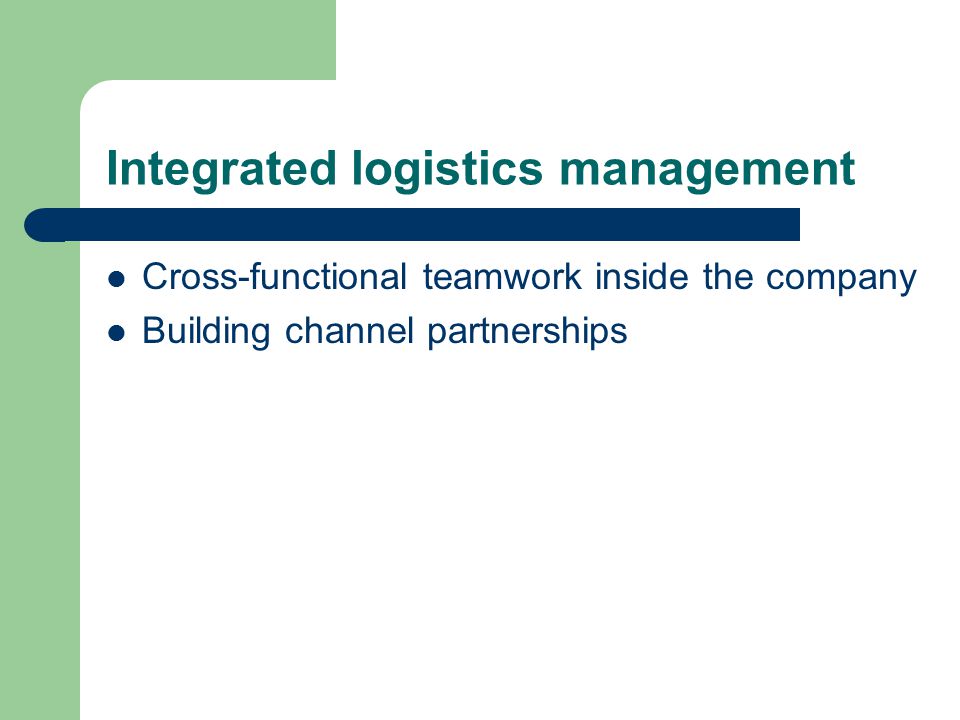Marketing channels
In order to produce a product, relationships with others in the supply chain are necessary. The term demand chain might be better, because it suggests a sense-and-respond view of the market. A value delivery network is composed of the company, suppliers, distributors and ultimately the customers, who partner with each other to improve the performance of the entire system in delivering customer value. The marketing channel (distribution channel) is a set of interdependent organisations that help make a product or service available for use or consumption by the consumer or business user. Channel members can add value by providing more efficiency and specialization in making goods. Some of the key function channel members do are: information gathering, promotion, contacting buyers, matching products and needs and negotiating agreements. But also physical distribution, financing and taking over risks of carrying out the work.
A channel level is a layer of intermediaries that performs some work in bringing the product and its ownership closer to the final buyer. Channel 1 is a direct marketing channel: a marketing channel that has no intermediary levels. Indirect marketing channels are channels containing one or more intermediary levels. Channels are behavioural systems composed of real companies and people, who interact to accomplish goals. Each channel member depends on others and they behave differently, which can lead to channel conflict: disagreement among marketing channel members on goals, roles and rewards, who should do what and for what rewards. Horizontal conflict occurs among firms at the same channel level. Vertical conflict is between different levels of the same channel.
For channels to work well, the role of the channel members must be specified. A conventional distribution channel is a channel consisting of one or more independent producers, wholesalers and retailers, each is a separate business seeking to maximise its own profits, even at the expense of profits for the system as a whole. In contrast with this is the vertical marketing system (VMS), a distribution channel in which producers, wholesalers and retailers act as a unified system. One channel member owns the others, has contracts with them or wields so much power that they all cooperate.
There are three major types of VMSs:
- Corporate VMS is a vertical marketing system that combines successive stages of production and distribution under single ownership. Channel leadership is accomplished through common ownership.
- Contractual VMS is a vertical marketing system in which independent firms at different levels of production and distribution join together through contracts. The most common example of a contractual VMS is the franchise organisation: a contractual marketing system in which a channel member (franchisor) links several stages in the production-distribution process. There are also three types of franchises: manufacturer-sponsored retailer franchise systems, manufacturer-sponsored wholesaler franchise systems and service-firm-sponsored retailer franchise systems.
- Administered VMS: a vertical marketing system that coordinates successive stages of production and distribution through the size and power of one of the parties.
Another development regarding channels is the horizontal marketing system: a channel arrangement in which two or more companies at one level join together to follow a new marketing opportunity. This can be with competitors, but also with non-competitors. A multi-channel distribution system is a distribution system in which a single firm sets up two or more marketing channels to reach one or more customer segments. This occurs when a company sets up multiple marketing channels to reach multiple customer segments and is most beneficial in complex markets, but also brings additional risks.
Current changes in the channel organisation include disintermediation, which is the cutting out of marketing channel intermediaries by product or service producers or the displacement of traditional resellers by radical new types of intermediaries.
Channel design
Marketing channel design means designing effective marketing channels by analysing customer needs, setting channel objectives, identifying major channel alternatives and evaluating those alternatives. The base is analysing consumer needs, since marketing channels are actually customer value delivery networks. Next comes setting the channel objectives. When identifying major channel alternatives, the company should look at three things:
- Types of intermediaries. The company should identify the different types of channel members that can be involved in the channel.
- The number of marketing intermediaries. Intensive distribution means stocking the product in as many outlets as possible. Exclusive distribution means giving a limited number of dealers the exclusive right to distribute the company’s products in their territories. Selective distribution involves the use of more than one, but fewer than all, intermediaries who are willing to carry the company’s products.
- The responsibilities of the intermediaries. Finally, the firm should evaluate all of the alternatives using economic criteria, control issues and adaptability criteria.
Marketing channel management means selecting, managing and motivating individual channel members and evaluating their performance over time. Managing and motivating other channel members means practicing partner relationship management to build long-term partnerships with other channel members.
Marketing logistics, or physical distribution, is the planning, implementing and controlling the physical flow of materials, final goods and related information from points of origin to points of consumption to meet customer requirements at a profit. It basically means getting the right product to the right customer at the right place and time. It includes both outbound (from company to customer) and inbound distribution (within the channel) and reverse distribution (moving returned products).
It involves the entire supply chain management: managing upstream and downstream value-added flows of materials, final goods and related information among suppliers, the company, resellers and final consumers. Logistics can be a source of competitive advantage and efficient ones can cut cost drastically. There is however a trade-off between minimal distribution costs and maximum customer service. Logistics include some major functions:
- Warehousing. Distribution centres are large, highly automated warehouses designed to receive goods from various plants and suppliers, take orders, fill them efficiently and deliver goods to customers as quickly as possible.
- Stock management involves deciding on the balance between too little and too much stock. Just-in-time logistic systems involve small stocks, while new stock arrives exactly when needed.
- Transportation affects the pricing of products, delivery times and the condition of the goods. It can be via road, but also via railways, waterways and air carriers. Intermodal transportation means combining two or more modes of transportation.
Integrated logistics management is the logistics concept that emphasises teamwork, both inside the company and among all the marketing channel organisations, to maximise the performance of the entire distribution system. Cross-functional teamwork inside the company means an integrated and harmonized system. Companies should not only improve their logistics, but also their logistic partnerships. Third-party logistics (3PL) provider is an independent logistics provider that performs any or all of the functions required to get a client’s product to the market. They often do this at a lower cost and more efficiently, while the company can focus on its core business.

